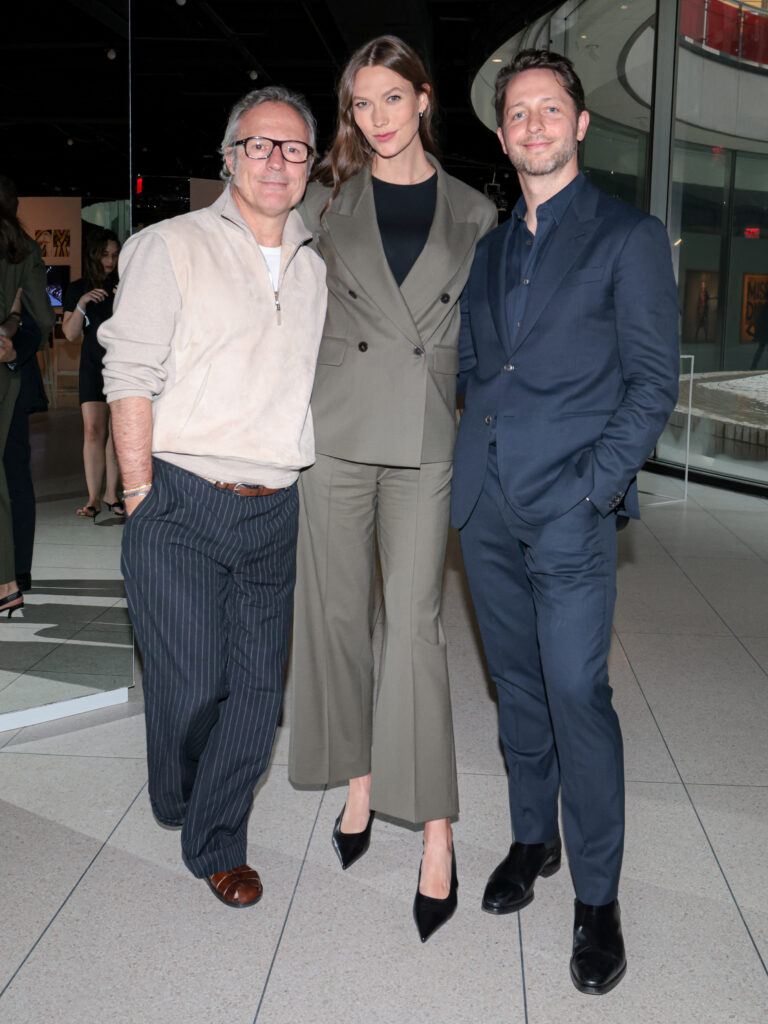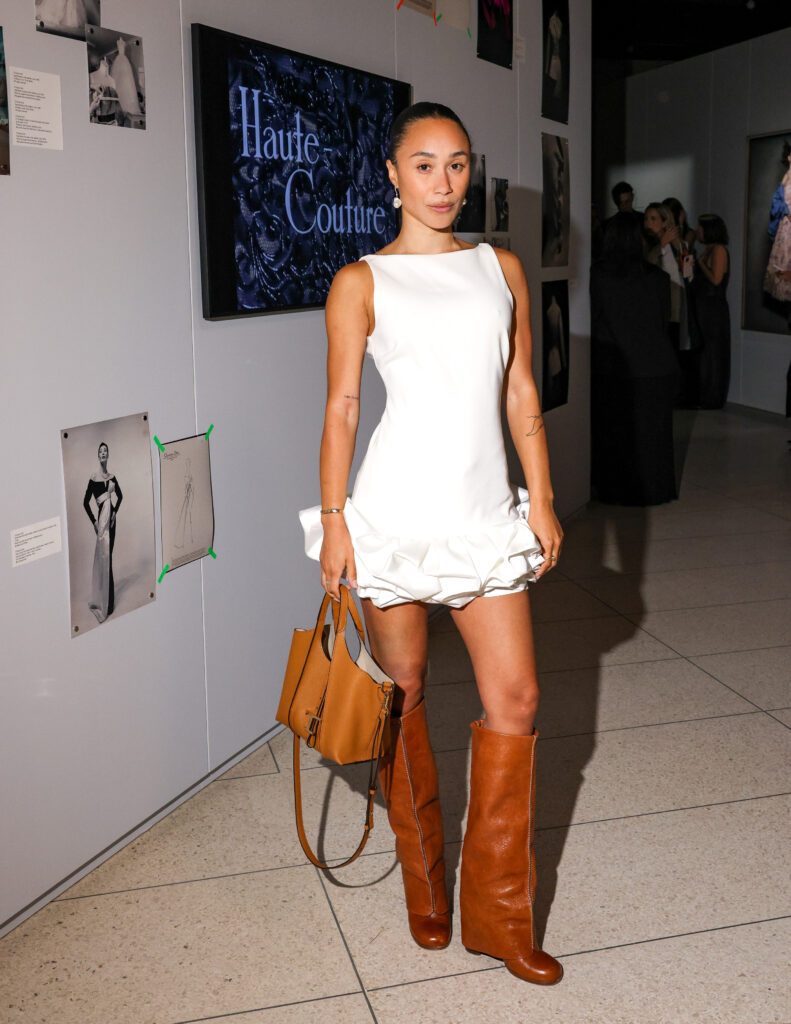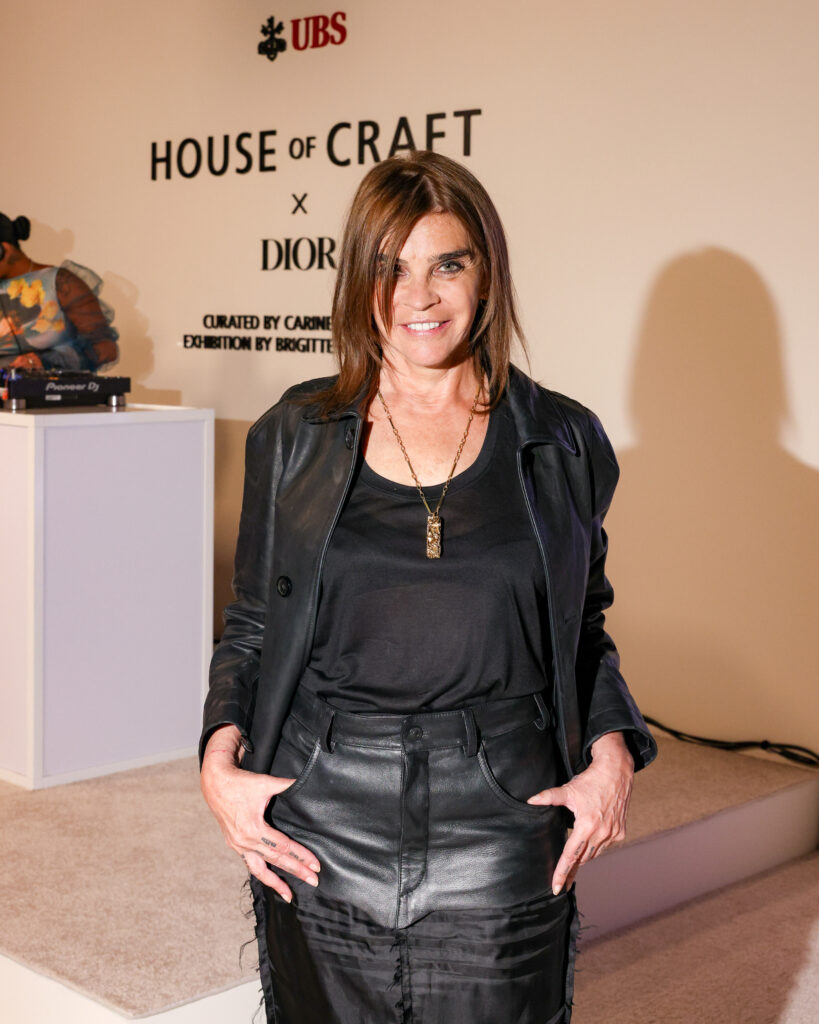In a rare intersection of fashion, finance, and fine art, Dior and UBS brought together New York’s creative elite on June 5 for a vernissage unlike any other. Held at 28 Pine Street in the heart of Manhattan’s Financial District, the exclusive evening marked the opening of The Magnificent Seven, a photographic tribute to Dior’s seven creative directors across nearly eight decades. It was a night not just of looking back, but of envisioning fashion’s forward path—glass in hand, couture on display. Curated by Carine Roitfeld and captured through the lens of renowned photographer Brigitte Niedermair, the exhibition told a story far larger than fashion. It reflected a lineage of innovation, each portrait standing as a chapter in a visual biography of one of the most storied maisons in fashion history. The event also marked a pivotal transition for Dior, as Jonathan Anderson prepares to assume the rare role of sole creative director across all lines—an honor last held by Monsieur Dior himself.
A gathering of icons and innovators
The vernissage drew a cross-section of the fashion and culture worlds, from supermodels to digital darlings. In attendance were the ever-elegant Karlie Kloss, eternal muse Helena Christensen, fashion powerbroker Carine Roitfeld, and tastemakers like Derek Blasberg, Peyton List, and Eva Gutowski. Musician Moses Sumney, artist Kelela, Maria Zardoya, and creative director June Ambrose added to the atmosphere, each guest reflecting the cultural breadth Dior continues to engage.

As guests sipped champagne and roamed through the intimate space, the tone of the evening was less about nostalgia and more about narrative—about how Dior has continually reshaped the definition of elegance to meet each generation. The setting itself—an industrial-modern venue in the Financial District—felt symbolic: a space where legacy meets momentum, and where craftsmanship continues to carry weight in a world obsessed with speed.
The magnificent seven and the legacy they shaped

At the heart of the exhibition was The Magnificent Seven, a body of work that spanned Dior’s creative evolution, highlighting the seven designers who have shaped its identity. From Monsieur Christian Dior’s architectural silhouettes to Yves Saint Laurent’s youthful rebellion, Marc Bohan’s refined minimalism, Gianfranco Ferré’s structural drama, John Galliano’s theatricality, Raf Simons’ cerebral restraint, and Maria Grazia Chiuri’s modern feminism—each was honored not as an isolated era, but as a conversation in continuum.
Brigitte Niedermair’s portraits elevated the exhibit from archive to artistry. Rather than recreating garments or staging runway nostalgia, she captured the philosophies of each designer in distilled, cinematic frames—part homage, part reinvention. The result was not a retrospective, but a reframing. These weren’t just creative directors; they were visionaries who used fashion to reflect their world.
And perhaps most notably, the exhibition nodded to the imminent future: Jonathan Anderson’s appointment as creative lead across all categories. His arrival signals a return to unified authorship at Dior—a model not seen since the days of Monsieur Dior himself. As fashion houses increasingly chase spectacle, this move suggests a renewed commitment to coherence and legacy.
Where couture meets curation
Curated by Roitfeld, the exhibition was more than an art installation—it was a statement about how fashion history is told, and who gets to tell it. Known for her sharp editorial vision and ability to translate runway into culture, Roitfeld brought her own understanding of modern femininity to the space. Her fingerprints were evident in the show’s pacing, tone, and the cinematic hush that lingered in every frame.

Niedermair’s eye complemented this curatorial sensibility, bringing a softness and intimacy to what might otherwise be an overwhelming legacy. Instead of viewing Dior’s history from a distance, the viewer was invited into its texture: the tilt of a shoulder seam, the fall of silk, the gaze of a muse.
The show itself was open to the public from June 6–8, a brief but brilliant moment of access for those eager to glimpse the heartbeat of the Maison. For Dior and UBS, it was a gesture toward inclusivity, showing that legacy doesn’t mean gatekeeping—it means opening the doors and letting others in.
A future shaped by the past
As Dior looks to a new chapter under Jonathan Anderson, the message of the night was clear: reinvention doesn’t require abandoning the past. In fact, the most visionary futures are often built with reverence for the foundation. With one eye on heritage and the other on innovation, Dior continues to assert its place not just in fashion, but in the cultural lexicon.
At a time when many brands chase headlines through provocation or virality, Dior offers something richer—longevity, nuance, and a commitment to the art of the long view. The Magnificent Seven is more than a celebration; it’s a reminder that fashion at its best is a form of storytelling. And for Dior, the next chapter is already being written.




